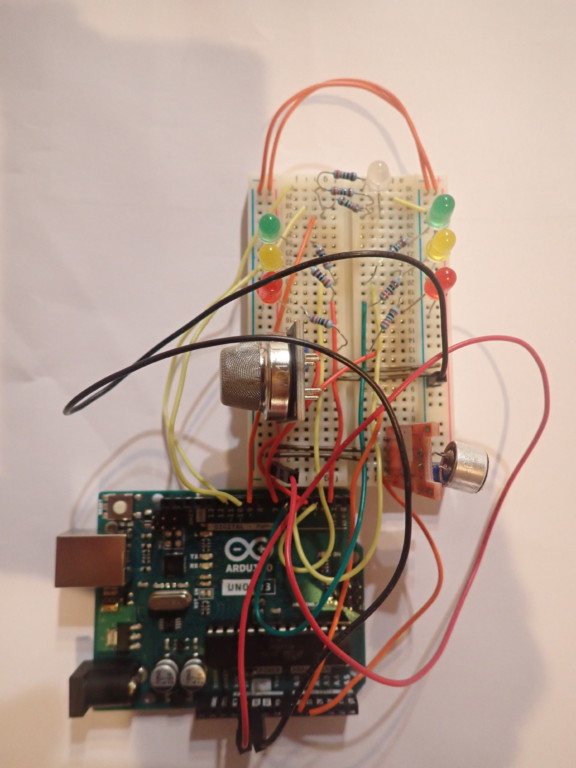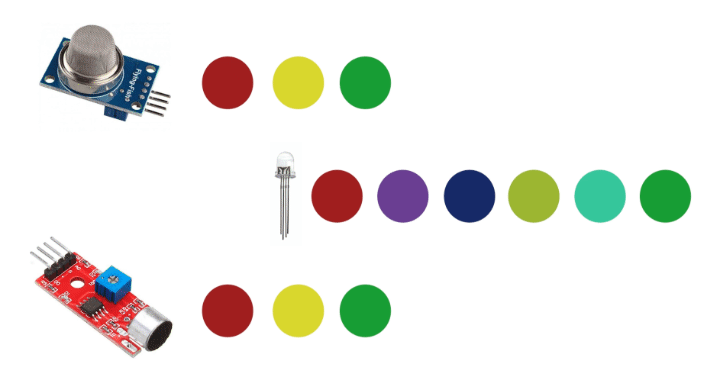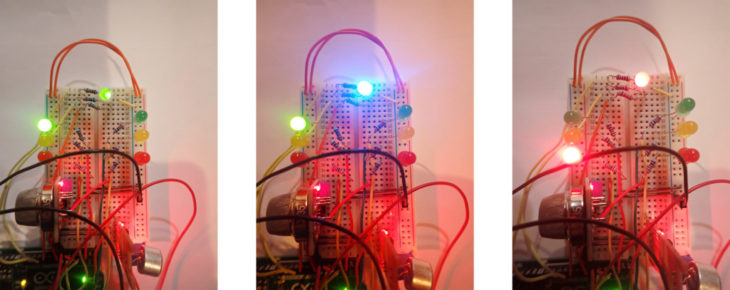
Pristine environment (Whitsunday Islands, Australia).
Accordingly to developmental psychologists, vertical development is a path of growing up toward increasingly comprehensive and holistic stages of maturity. These vertical stages-structures of consciousness determine how to make sense of the world and any experience in it. This is opposed to horizontal learning which is the development of competencies such as communication and active listening skills or increasing technical expertise.
[Ken Wilber, Kosmic Consciousness, 2003]
Design
The device here developed wants to be a detector for peaceful and pristine environments, transforming how we think, feel, and make sense of the world. As well as metal detectors track deep down precious nuggets, Medit-Detector identifies spaces suitable for meditation.

Components of Medit-Detector.
Code development
Defining the INTegers, i. e. , the primary data type for number storage.
Setting up INPUTS (Sensors) and OUTPUTS (LEDs) along with the data rate of 9600 bits per second
Describing the loop function to repeat the code constantly. In this scenario values of both sensors have been remapped to convert them in LEDs delay as well as LED RGB readable values (from 0 to 255).
MQ 135 Gas Sensor MAPPING – LEDsdelay = map(volts, 0, 4, 500, 1000) – LEDRgb = map(volts, 0,4, 100, 127);
Loudness Sensor MAPPING – LEDsdelay = map(volts, 0, 300, 500, 1000) – LEDRgb = map(volts, 0,300, 50, 127);
This step allows Red, Yellow, Green LEDs to blink depending on the sensor reading. The ranges for both sensors were adjusted depending on the highest and lowest measurements in the worst and best scenarios.
Environment evaluation

Environmental palette (from red=poor to green=great conditions).

Different LEDs patterns.
Further steps
- Implementing Actuators to counterbalance poor environmental qualities. Technological devices react to the environment, shaping its qualities depending on the activity.
- Increasing the number of Sensors to enrich the overall environmental evaluation. Adding sensors able to capture and evaluate noise frequencies, luminous flux, humidity, etc…
- Adding multiple LEDs RGB that work within a hierarchical structure. LEDs RGB structure able to combine data from multiple sensors (subsystems) and convert it into one final color value (sort of pyramid organizational structure.
Medit-Detector is a project of IAAC, Institute for Advanced Architecture of Catalonia developed at Masters in Advanced Architecture in 2021/2022 by:
Student: Federico Caldi
Faculty: Angelo Muñoz, Cristian Rizzuti, and Bernat Morato
Assistant: Daniil Koshelyuk
Course: Introduction to Programming and Physical Computing